Mexico City, or CDMX, is one of the world’s top foodie destinations, so if you’re wondering what to eat in Mexico City, the short answer is: anything and everything you can!
If, however, you aren’t able to intake infinite calories during your trip to CDMX, I’ve helped narrow down what the best foods to eat in Mexico City are. Warning: I don’t recommend reading this list on an empty stomach!
If you’re following my 4 days in Mexico City itinerary, you’ll have plenty of time to explore the city’s food scene.
We booked this small group bicycle food tour and our local guide led us to all of the best spots to try the below delicacies. I highly recommend it if you’re short on time and want to try the best foods beloved by locals and not just rated highly on Tripadvisor. It’s one of the most affordable yet highly rated food tours in Mexico City. Learn more here.
Note: if you’re a vegetarian or vegan, CDMX is still for you! You might just skip a couple of the below tacos. I would recommend doing a vegetarian/vegan specific tour with a local like this one so that you can quickly get a lay of the land.
Disclosure: This post may contain affiliate links. If you make a purchase through these links, we may earn a commission at no extra cost to you.
What to Eat in Mexico City
Tacos
Let’s just start with the best of the best, in my opinion. Eat as many tacos in Mexico City as you can. The street tacos are out of this world and usually less than $0.50 USD a piece. They’re also really small (about the diameter of a softball) so you can try loads of different varieties.
Tacos al Pastor – my personal favorite
- Marinated pork cooked on a vertical spit (similar to shawarma), typically served with pineapple, cilantro, onions, and salsa on a corn tortilla.
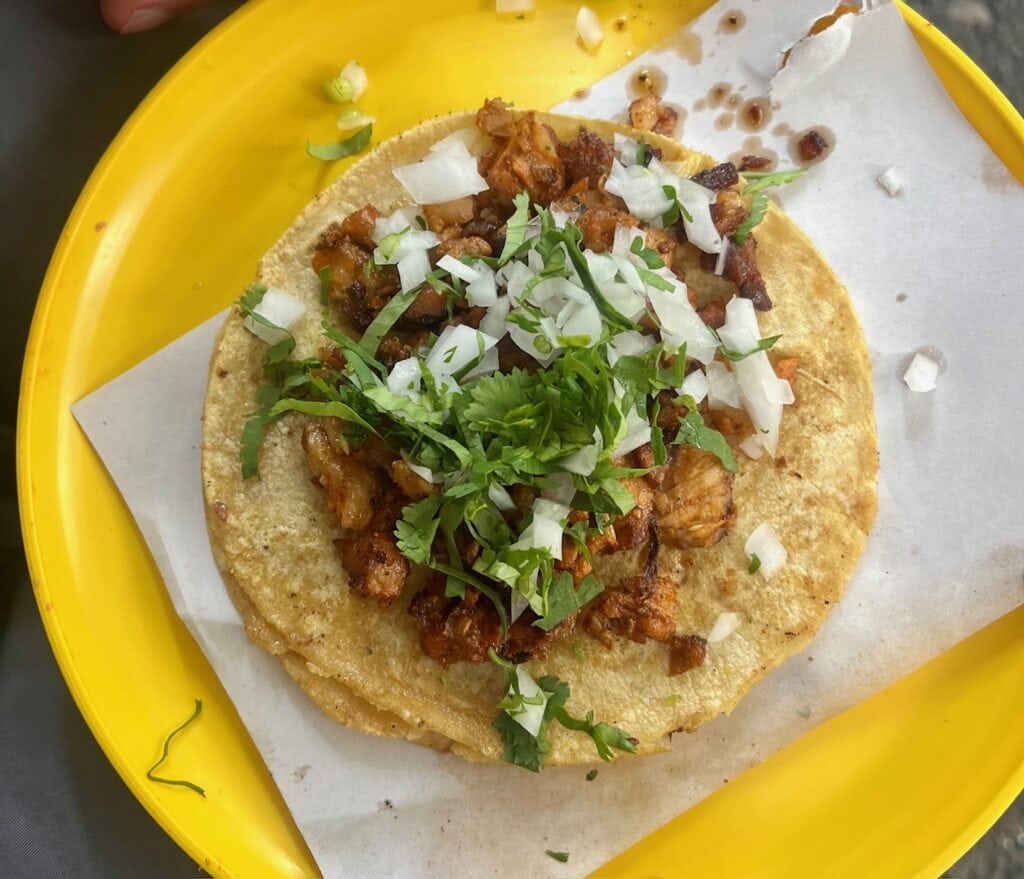
Tacos de Suadero
- Made from a thin cut of beef (suadero) that’s slow-cooked in fat and then seared, served with onions, cilantro, and salsa.
Tacos de Carnitas or simply Carnitas
- Pork simmered in its own fat until tender and juicy, often accompanied by cilantro, onions, and salsa. Carnitas tacos are a specialty in Mexico City.
Tacos de Barbacoa
- Traditionally lamb or beef slow-cooked in an underground pit, wrapped in agave leaves. Served with cilantro, onions, and a rich broth called “consomé.”
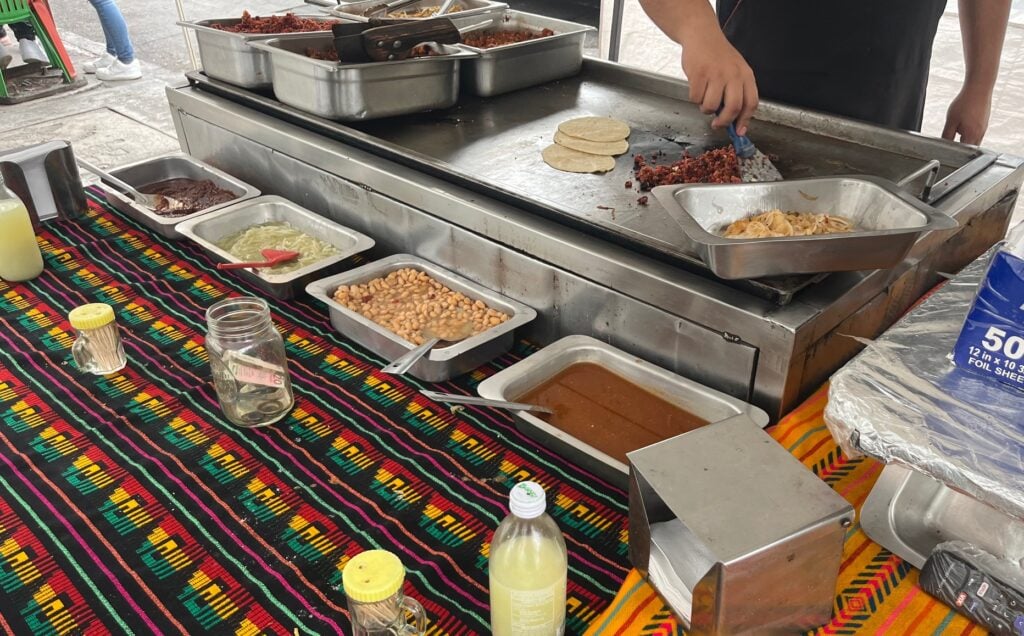
Birria
- Spicy, slow-cooked beef or goat, usually served with consommé for dipping. Birria tacos have recently gained popularity outside Mexico too, making it on Taco Bell menus.
If street food stands aren’t your thing for whatever reason, Tacos Orinoco is a beloved favorite of locals and has locations all around the city. You can try tons of different tacos and enjoy their spicy sauces with them. You’ll pay slightly more than you would at a stand, but they are almost as delicious.
Blue Corn Tortillas (preferably as a Taco)
Blue corn tortillas are a traditional Mexican staple made from blue corn, a variety of maize native to Mexico. And when I say blue, I mean blue. Not kind of black or brown or just barely blue, but a bright blue. The tortillas themselves have a slightly nuttier flavor and firmer texture compared to white or yellow corn tortillas.
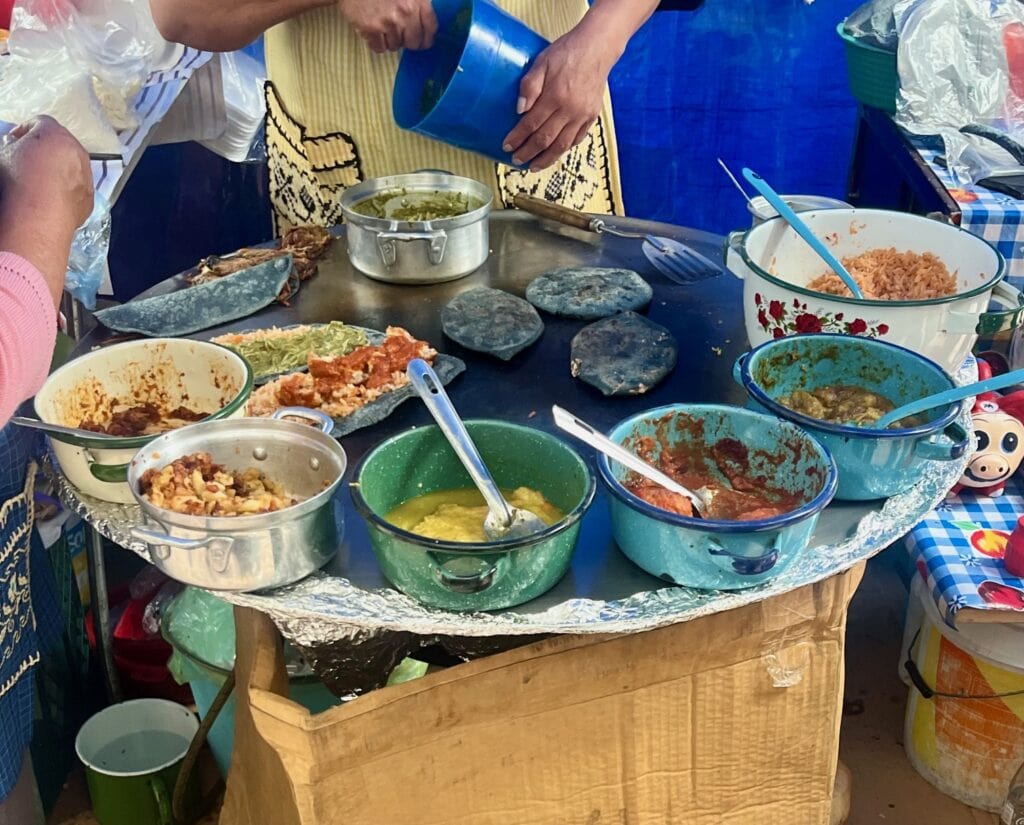
We only had these at street food stands (the #1 reason Mexico City is worth visiting, in my opinion). The best way to know if a street food stand is worth visiting or not? If there’s a few locals milling about eating the food, you want to eat the food too.
We had the best luck on weekdays when the vendors were serving people working downtown, and the worst luck on Sundays when church was in session and/or people were sleeping off their hangovers.
Check out my full list of where to stay in Roma Norte as I detail the best hotel for street food proximity.
Tamales
I discovered tamales only a couple of years ago and really feel like I was missing out before. Tamales date back thousands of years to civilizations like the Aztecs and Mayans, who used them as portable food for warriors and travelers. Into the late 18th century though, they were considered “peasant food” eaten by the lower class.
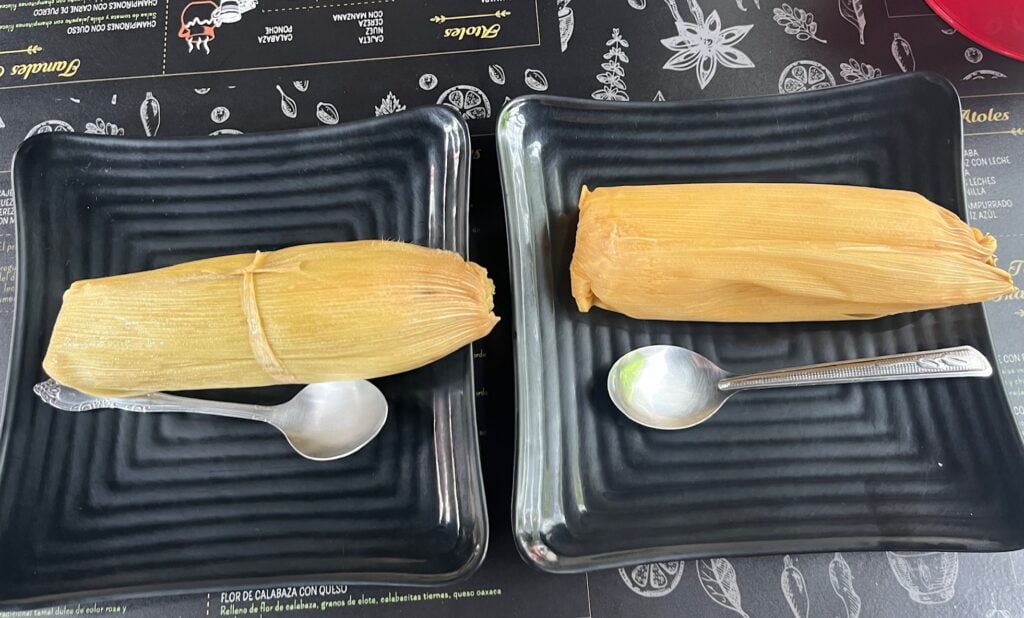
Tamales are now more popular than ever in mainstream Mexican cuisine. Traditionally made from masa (corn dough) filled with various ingredients, usually savory but sometimes sweet, and wrapped in corn husks or banana leaves.
If you’re interested in learning how to make your own tamales, plus other mouthwatering Mexican dishes, I’d highly recommend taking a Mexican cooking class that includes a visit to a local market. Taking cooking classes while traveling is one of our ultimate favorite things to do. Book here!
Sopes
Sopes are a traditional Mexican food featuring thick corn masa (dough) bases that are shaped into small, round, and slightly raised edges to hold various toppings. They’re a similar size to the street tacos you’ll be eating, the masa is just substantially thicker than a tortilla.
Sopes are often topped with a variety of ingredients, including refried beans, seasoned meat (such as beef, chicken, or pork), lettuce, salsa, cheese, crema (Mexican sour cream), and avocado. While walking around the city, you should find no shortage of stands offering this delicacy.
Chapulines
This one is not for the faint of heart. Dried crickets, known as “chapulines” in Mexico, are a traditional snack with deep cultural roots, especially in the regions of Oaxaca, where they have been consumed for centuries, but have increased in popularity in Mexico City as well.
They’re really rich in protein, vitamins, and minerals and are typically toasted on a comal (a flat griddle) and often seasoned with garlic, lime juice, and salt, enhancing their nutty flavor. They’re basically bar nuts. Chapulines are commonly enjoyed as a snack on their own, sprinkled on tacos, or used as a topping for various dishes.
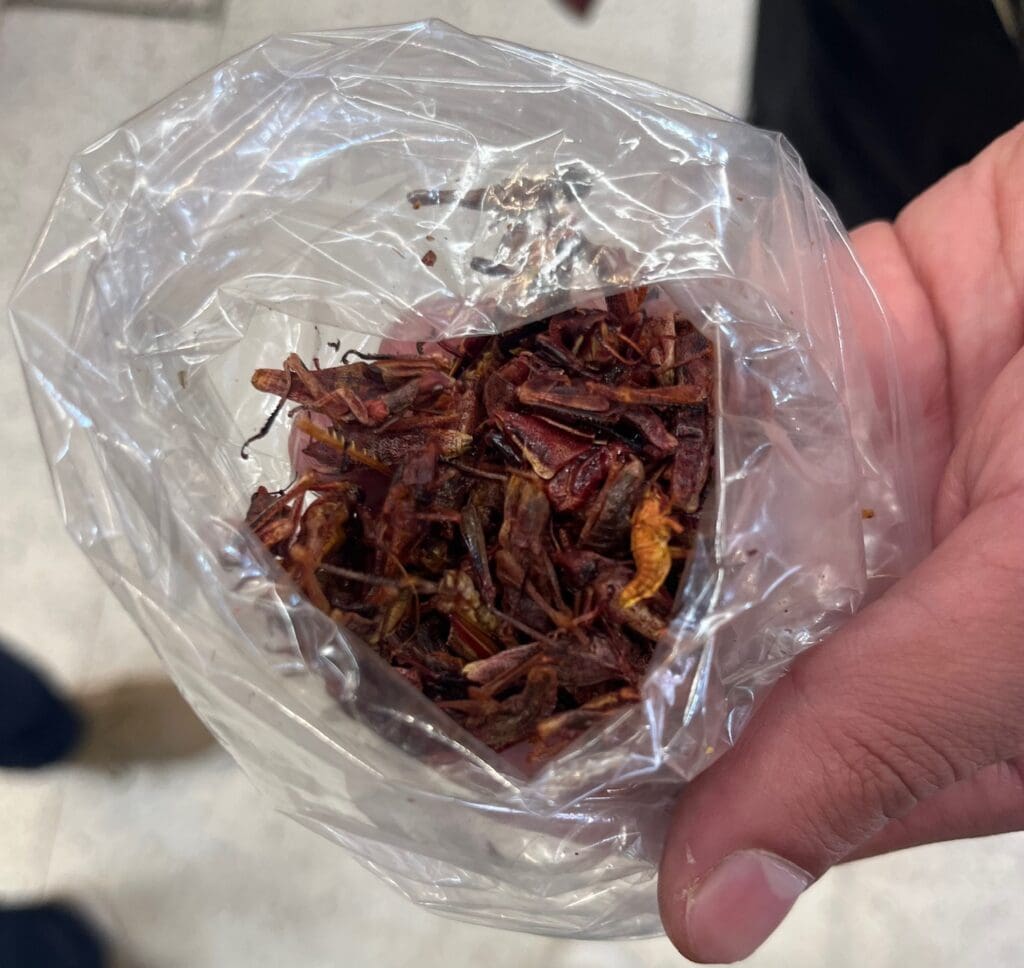
They may not top the list of best things to eat in Mexico City, but they’re certainly the most unique.
I’ll be honest and say I didn’t actually try these as the thought of getting a leg stuck in my teeth was enough to wig me out. My husband, however, was delighted to munch on them.
Mole (preferably Mole Verde)
Mole verde, or green mole, is a bright and flavorful sauce originating from Mexico, known for its fresh ingredients and strong herbal notes. Made from a blend of tomatillos, green chilies, cilantro, parsley, and various spices, mole verde is a lighter alternative to the richer, darker moles that are made of poblano peppers and sometimes chocolate.
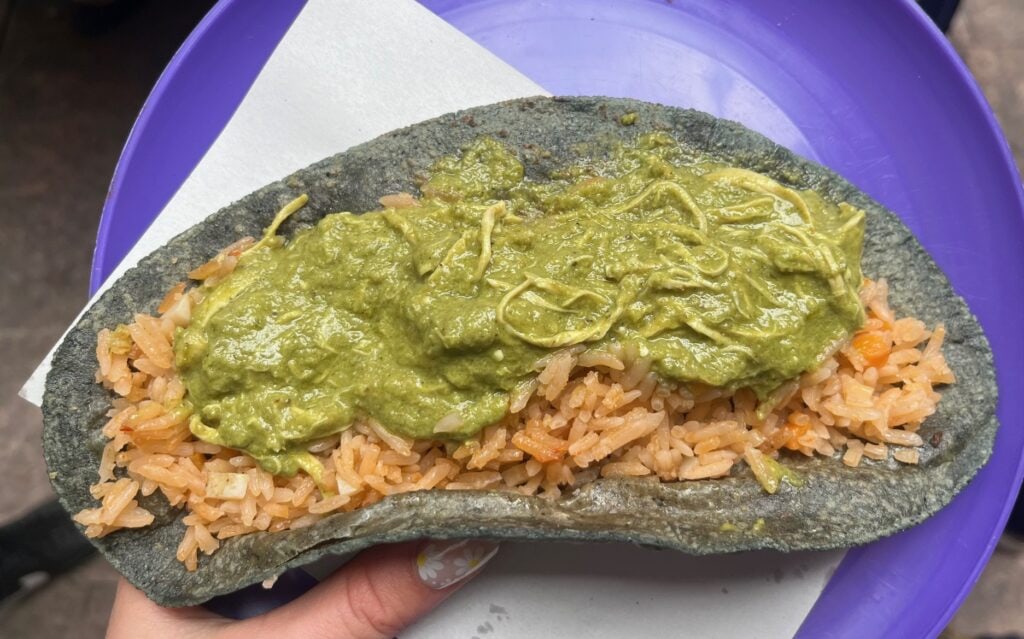
It is my personal favorite when served with chicken. I’m talking, if you see “pollo mole verde” on any menu in CDMX, order it and thank me later. It’s genuinely one of my favorite flavor profiles of anything I’ve eaten anywhere in the world. Even better if it’s served on blue corn tortillas.
Elote
Elote is a popular Mexican street food made from grilled corn on the cob, usually topped with mayonnaise, cheese, chili powder, and lime juice. Its roots go back to ancient Mesoamerican cultures, where corn was one of the most important foods and held cultural significance.
Elote became especially popular in the 20th century, with street vendors selling it in cities. You can find it at fairs, festivals, and on the streets, though we admittedly had a harder time tracking it down, compared to something like the blue corn tortillas. A similar dish, called “esquites,” features the same toppings but is served off the cob in a cup. Both forms of elote are highlights of Mexico City cuisine.
Mezcal
Mezcal, tequila’s smokier and sexier cousin, is a centuries old Mexican spirit made in the nearby regions of Oaxaca. Mezcal has recently enjoyed a surge in popularity across the globe, thanks in part to its unique smokey profile, which will vary depending on the agave species and production methods used.
Mezcal can be sipped neat or mixed into delicious cocktails. Mexico City is home to some of the best bars in the world, so don’t miss the chance to sample mezcal on any of their menus in some sort of clever concoction.
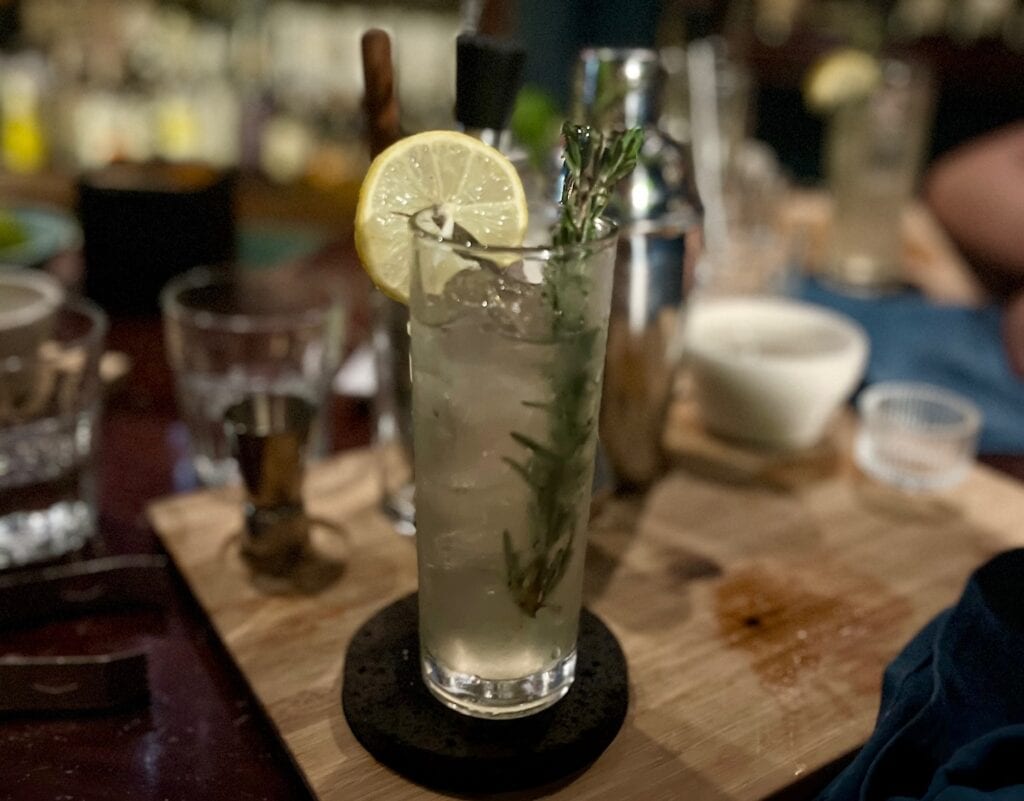
As I detail in my things to know before visiting Mexico City for the first time, you’ll definitely need a reservation in advance to many of the city’s top bars.
If you’re interested in experiencing the drink but have no idea where to start, I would recommend booking this Tacos & Mezcal Crawl that will take you to all of the city’s best spots, and make sure you don’t get too intoxicated thanks to the tacos. If that sounds like your match made in heaven, book here.
Michelada
A michelada is a popular Mexican cocktail that combines beer with a flavorful mix of lime juice, assorted spices, and sauces, resulting in a refreshing and zesty drink. Emphasis on zesty. It’s usually served in a salt-rimmed glass and can be customized with unique flavors like soy sauce and hot sauce.
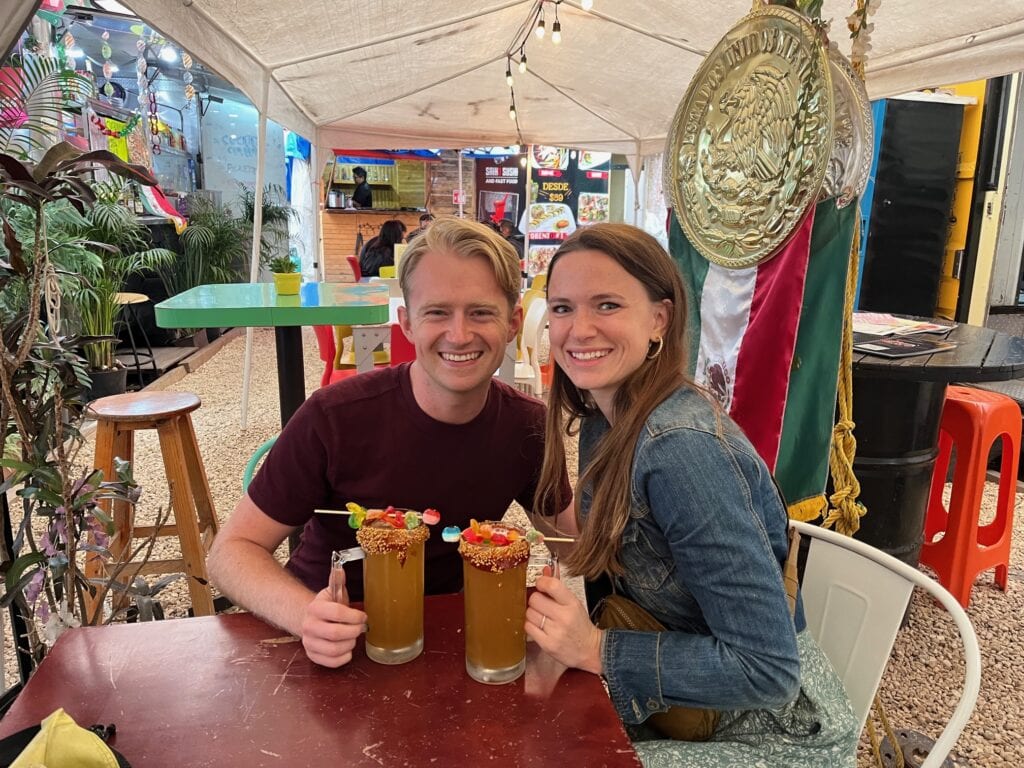
I’m not a beer drinker, nor do I really like chamoy, so the michelada was not for me. But I’m glad I got to experience what all the hype was about for myself.
Aguas Frescas
Aguas frescas, meaning “fresh waters” in Spanish, are refreshing non-alcoholic beverages popular in Mexico and Central America, made by blending fruits, flowers, or grains with water and sugar. Common flavors include horchata (made from rice, almonds, and cinnamon), tamarindo (tamarind), and jamaica (hibiscus), but the options are virtually limitless, with regional variations showcasing local ingredients.
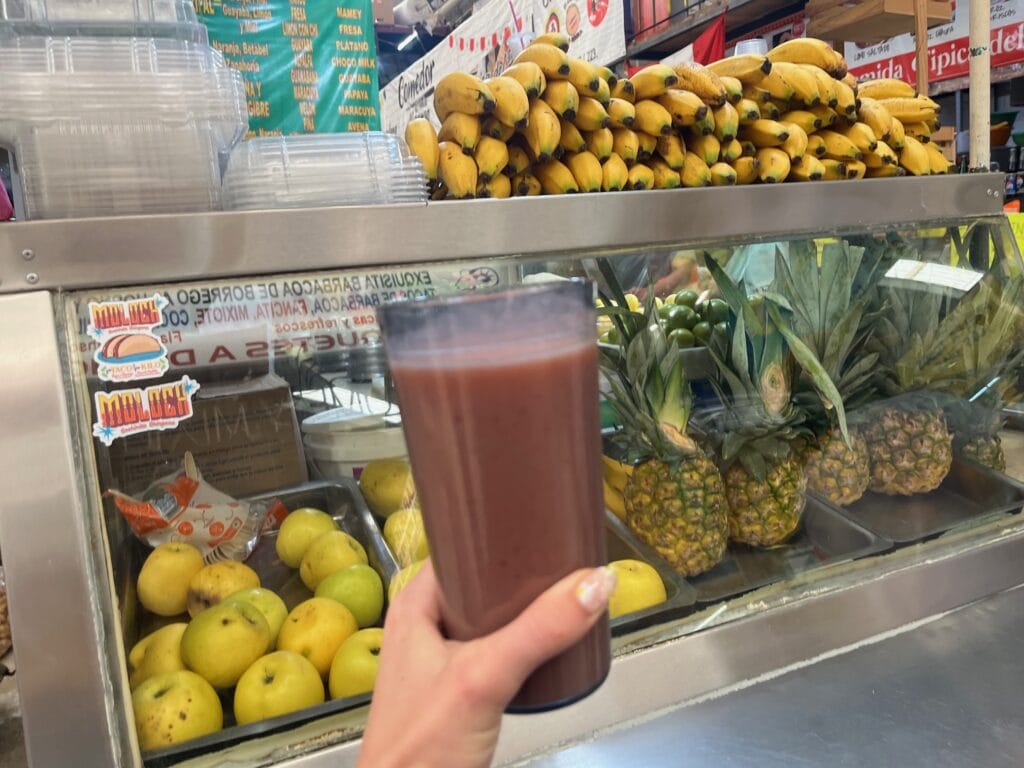
I enjoyed sipping on a strawberry and mango version of the drink while strolling through one of the city’s hundreds of mercados. I’d recommend getting a smaller size as they will surprisingly fill you up and you’ll need to save room in your stomach to try everything else on this list.
Churros
While churros were introduced to Mexico by Spanish colonizers, they are now a beloved treat in Mexico City. The airy dough is fried until golden brown and then rolled in a cinnamon and sugar mixture right from the hot oil. They are usually enjoyed with a cup of hot chocolate or coffee and dulce de leche for dipping.
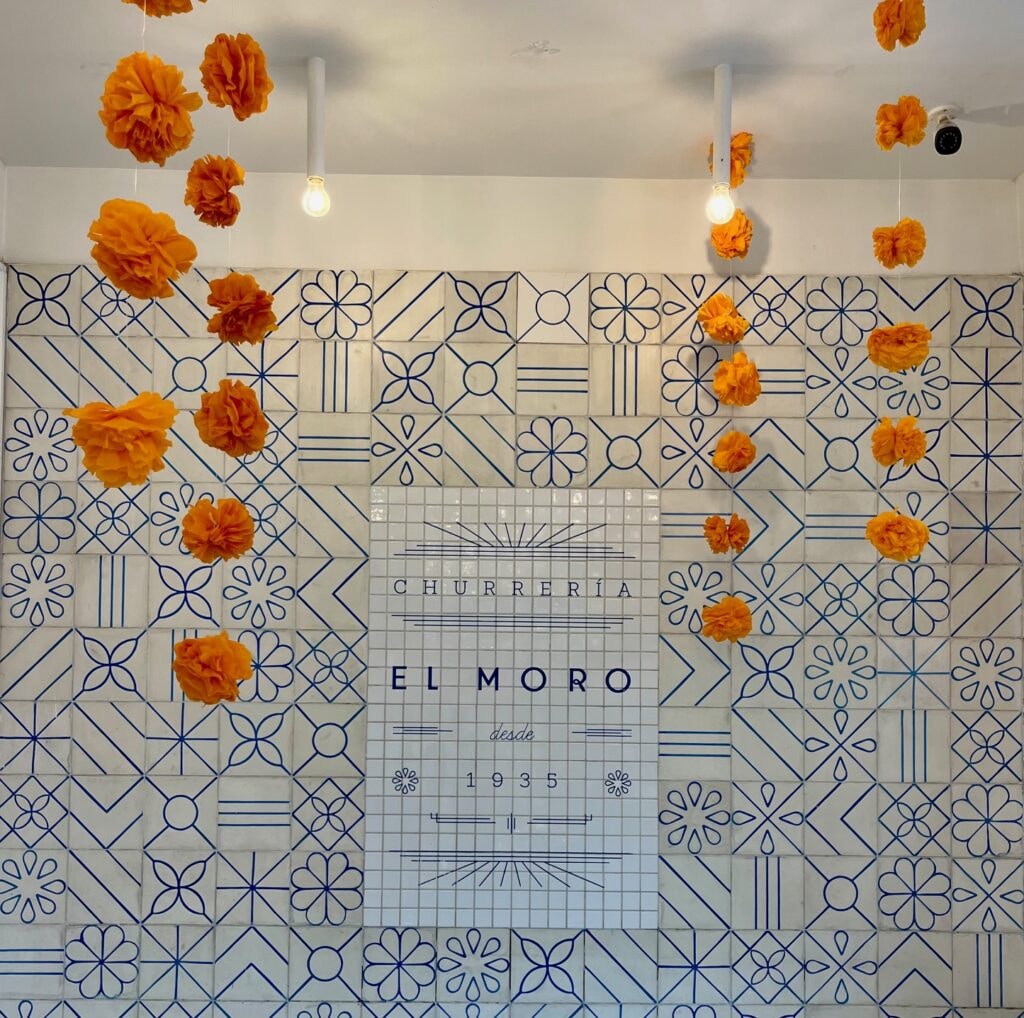
El Moro is probably the most popular churrería, with locations all throughout the city and even the international airport. Side note: if you live in Southern California, they have one location in the United States at the Northgate Mercado in Costa Mesa. We lived 5 minutes from there and were spoiled by the proximity to deliciousness.
When we visited CDMX, we decided to take a churro making class and it ended up being a total blast. We got to enjoy our homemade (and slightly misshapen) churros alongside a chile chocolate dipping sauce and Mexican coffee. Click here to book the same experience we did!
Conchas
I don’t particularly love donuts in the United States (don’t come at me), but I love conchas. I’m not sure what it is about this particular sweet fried bread that does it for me, but they are simply delectable and some of the best food in Mexico City.
Rosseta’s Bakery is one of the most popular cafes in the city and is an excellent spot to try one of these babies in the morning with a sip of coffee. That’s a pretty typical breakfast in Mexico City, so you’ll blend in with the locals with your pastry and caffeine.
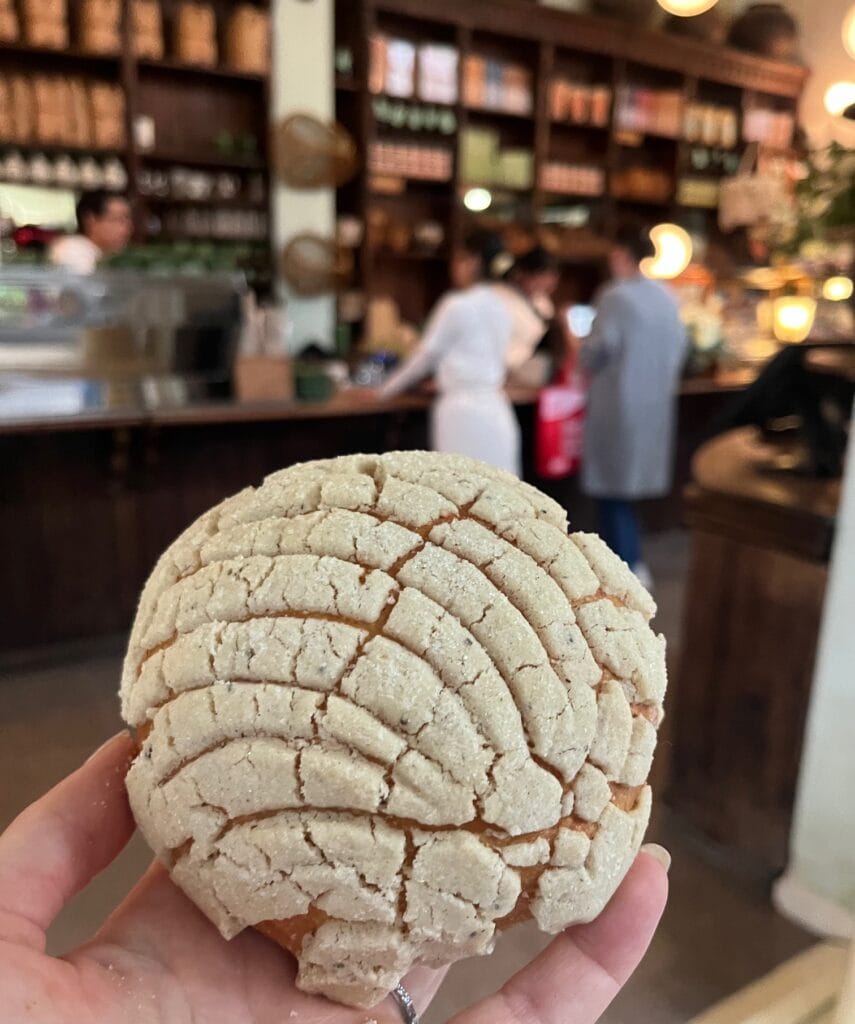
You might crash after an hour or two if you’re used to having more protein for breakfast, but follow your nose to a taco stand and remedy that.
In short, Mexico City is a paradise for food lovers, and no matter how long you’re there, you’ll always wish you had more time (and stomach space) to explore the local flavors.
Whether you’re biting into a taco al pastor at a street stand, savoring mole verde at a local restaurant, or braving a taste of chapulines, you’ll find some of the best foods to eat in Mexico City at every corner. You’ll leave a few pounds heavier and with an intimate knowledge on why Mexico City cuisine is celebrated worldwide.
If you’re following my list of what to pack in Mexico City, I would not plan to wear a pair of particularly tight jeans if you do end up doing a food tour!
Don’t be afraid to step out of your comfort zone and try something new. Trust me, when it comes to the best things to eat in Mexico City, you really can’t go wrong!
Save to Pinterest for later:
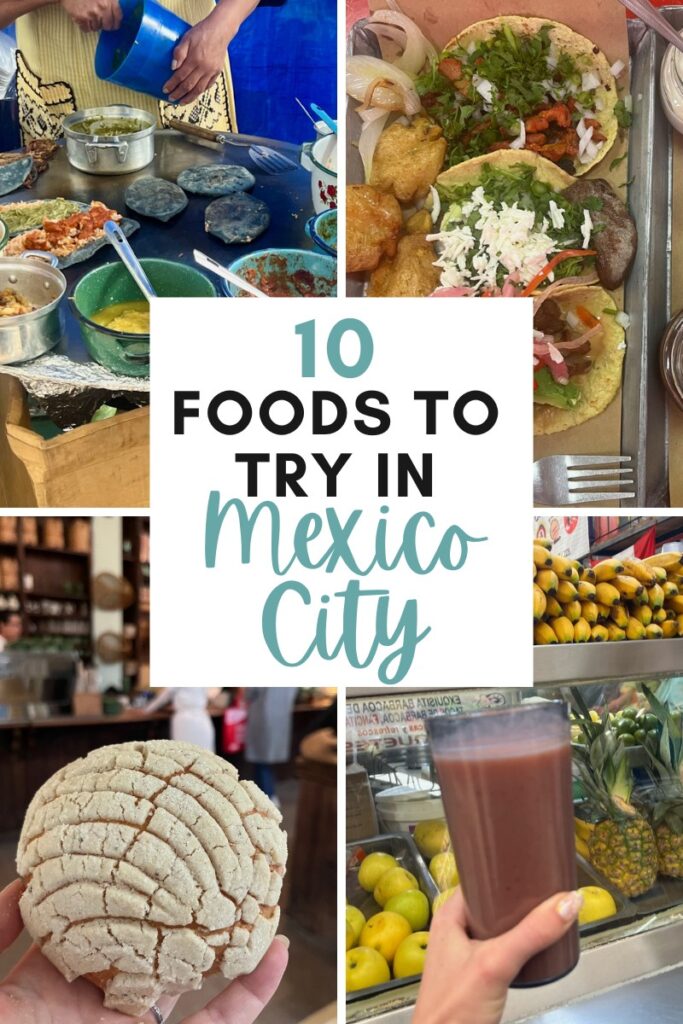
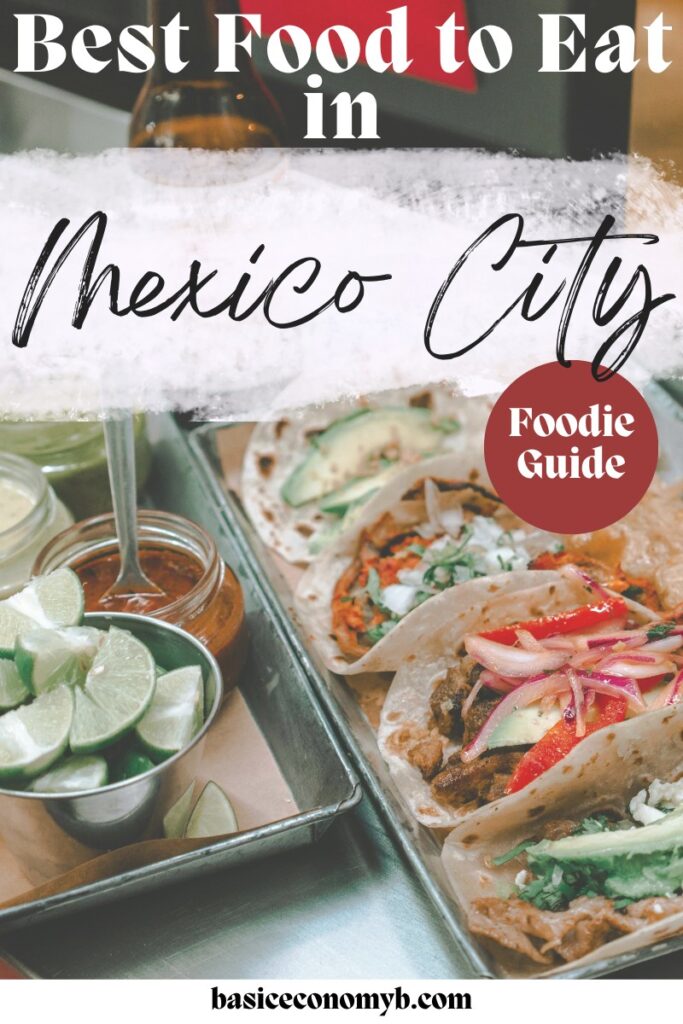
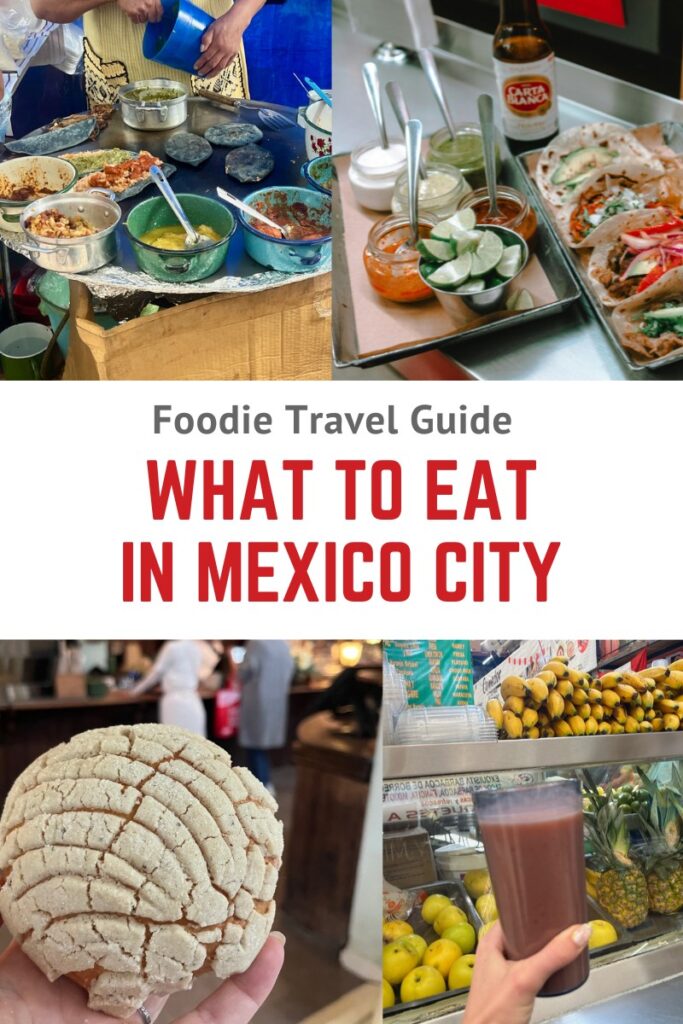

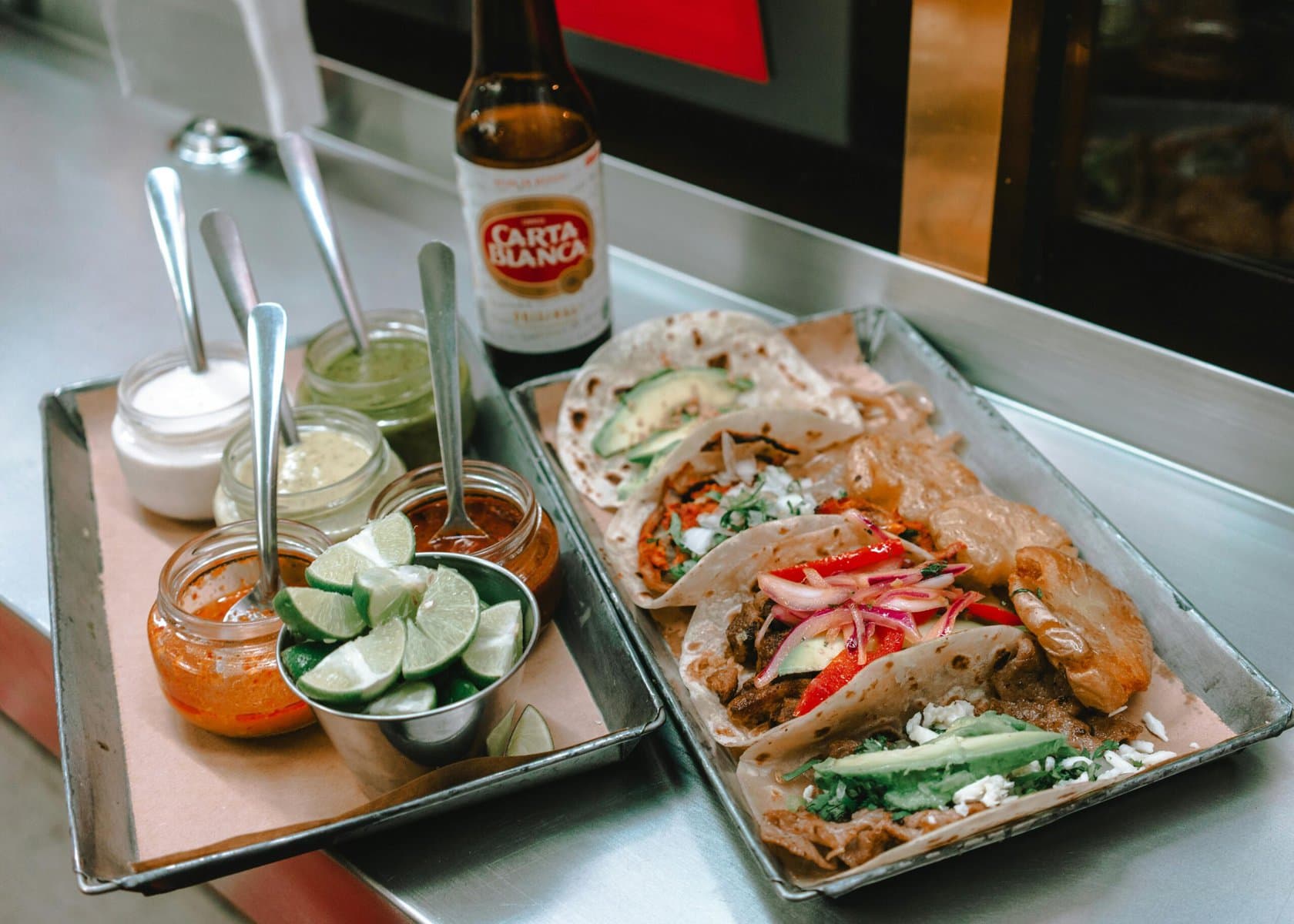
Leave a Reply